1. Research and development 2017
1.1. Number of R&D personnel unchanged
In 2017, altogether 72,600 persons were employed in research and product development tasks, good one-half of them in business enterprises. The total number of R&D personnel did not in practice change from the year before. Examined by sector, in business enterprises the decrease was nearly 800 R&D personnel (two per cent), in the government sector 1) , in turn, there was an increase of 400 persons (six per cent) and in the higher education sector an increase of 600 persons (2.2 per cent). The share of women of research personnel grew by one percentage point and was 35 per cent. The share increased in the higher education sector and the government sector, in business enterprises it remained unchanged. The share of female researchers varies by sector, as in business enterprises only one researcher in five was a woman, in the government sector the share of women was 47 per cent and in the higher education sector one half. Seventy-five per cent of the R&D personnel were researchers and R&D engineers, while the rest were engaged in expert or support tasks related to R&D activity.
R&D in full-time equivalents amounted to 49,000 in 2017. The number increased from the previous year by 1,570 staff-years, or good three per cent. The increase was six per cent in the higher education sector, four per cent in the government sector and two per cent in business enterprises. Fifty-seven per cent of R&D in full-time equivalents were made in business enterprises.
Figure 1. R&D personnel and R&D in full-time equivalents in 2010 to 2017
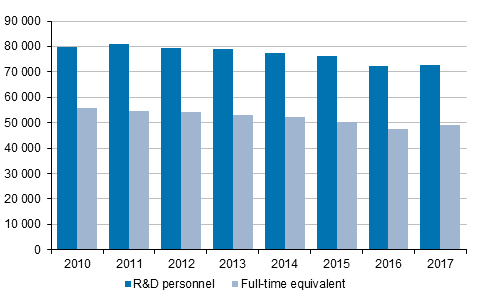
1.2. R&D expenditure grew by four per cent
The total sum of research and product development expenditure was EUR 6.2 billion in 2017, which is EUR 247 million more than in the year before. In total, expenditure increased by four per cent, growth was strongest in the government sector (eight per cent). R&D expenditure increased by five per cent in the higher education sector and by three per cent in business enterprises from 2016. R&D expenditure last increased in 2011. Research and development expenditure is estimated 2) to grow in 2018 by around EUR 140 million to EUR 6.3 billion. Growth is anticipated mainly for business enterprises. The GDP share is estimated to be 2.70 per cent.
The six per cent growth in full-time equivalents and five per cent growth in research expenditure in the higher education sector are partly explained by the latest data on working hours received from universities. The share of research in the working time of university personnel used in the calculations has been updated for 2017. The previous update concerned 2014, so the new time use coefficients describe the development of the work time structure from 2014 to 2017. Calculated with the shares of research of 2014, the change in R&D in full-time equivalents from 2016 to 2017 was three per cent and that of R&D expenditure 1.5 per cent.
Table 1. R&D expenditure by performer sector and GDP share of R&D expenditure in 2009 to 2017 and estimate for 2018
| Year | Sector | Total | Share of R&D in GDP 2) | ||||||
| Business enterprise sector | Government sector 1) | Higher education sector | |||||||
| EUR mil. | % | EUR mil. | % | EUR mil. | % | EUR mil. | % | % | |
| 2009 | 4 847,2 | 71,4 | 656,5 | 9,7 | 1 282,8 | 18,9 | 6 786,5 | 100 | 3,75 |
| 2010 | 4 854,5 | 69,6 | 692,0 | 9,9 | 1 424,8 | 20,4 | 6 971,3 | 100 | 3,73 |
| 2011 | 5 047,4 | 70,5 | 684,4 | 9,6 | 1 431,8 | 20,0 | 7 163,7 | 100 | 3,64 |
| 2012 | 4 695,0 | 68,7 | 662,2 | 9,7 | 1 474,6 | 21,6 | 6 831,9 | 100 | 3,42 |
| 2013 | 4 602,4 | 68,9 | 643,6 | 9,6 | 1 438,1 | 21,5 | 6 684,2 | 100 | 3,29 |
| 2014 | 4 409,5 | 67,7 | 613,1 | 9,4 | 1 489,5 | 22,9 | 6 512,1 | 100 | 3,17 |
| 2015 | 4 047,3 | 66,7 | 543,1 | 8,9 | 1 480,5 | 24,4 | 6 070,9 | 100 | 2,90 |
| 2016 | 3 901,7 | 65,8 | 534,6 | 9,0 | 1 489,8 | 25,1 | 5 926,1 | 100 | 2,74 |
| 2017 | 4 028,3 | 65,3 | 577,7 | 9,4 | 1 567,2 | 25,4 | 6 173,2 | 100 | 2,76 |
| 2018 3) | 4 156,0 | 65,8 | 583,3 | 9,2 | 1 572,5 | 24,9 | 6 311,8 | 100 | 2,70 |
2) GDP 2015 and 2016 Statistics Finland preliminary figures, GDP 2018 forecast of Ministry of Finance.
3) Estimate of R&D activity based on survey responses and other calculations.
Business enterprises account for 65 per cent of R&D expenditure and for 56 per cent of funding of expenditure. The government sector is responsible for nine per cent of expenditure, but in funding its share is 33 per cent (including basic funding of the higher education sector by the Ministry of Education and Culture). The significance of the higher education sector as a provider of funds is half a per cent, the share from abroad is around 11 per cent.
Finland’s GDP share of R&D expenditure in 2017 was 2.76 per cent. At its highest, the share was 3.75 per cent in 2009. Although Finland’s share has dropped in recent years, it is still higher than average for OECD and EU countries. Of the European Union’s gross domestic product, 1.93 per cent was spent on research and development in 2016. The corresponding share for the OECD area was 2.34 per cent. Based on the data for 2016, the most R&D intense countries in the OECD area are Israel (4.3%) and South Korea (4.2%). Sweden has, with its GDP share of 3.25 per cent, overtaken Finland. International figures can be found via the statistics’ links page 3)
Figure 2a. R&D expenditure by performer sector in 2017
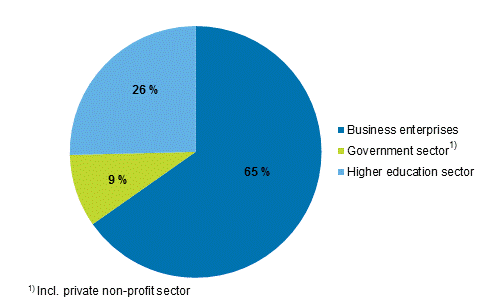
Figure 2b. R&D expenditure by funding sector in 2017
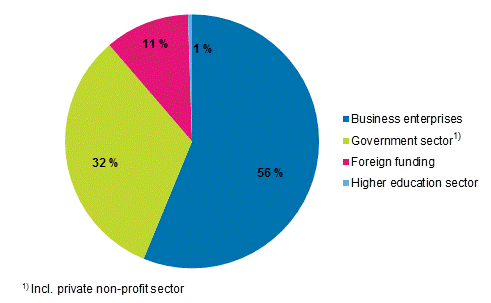
Figure 3a. GDP share of R&D expenditure in certain EU countries in 2010 to 2016
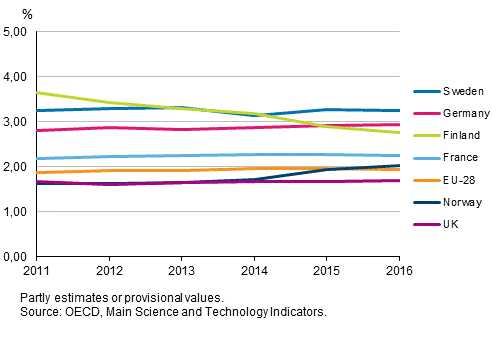
Figure 3b. GDP share of R&D expenditure in certain OECD and other countries in 2010 to 2016
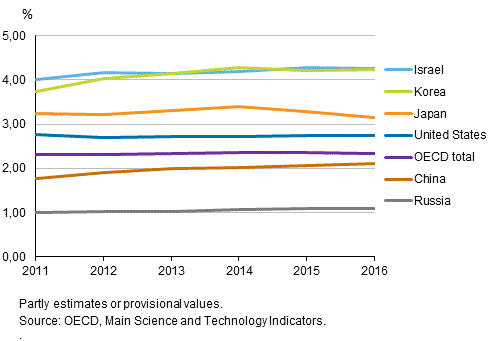
1.3. No change in the regional division of R&D expenditure
The expenditure of R&D practised in the region of Uusimaa amounted to EUR 3.1 billion in 2017, which is one-half of R&D expenditure in the whole country. R&D expenditure in North Ostrobothnia was EUR 730 million and in Pirkanmaa EUR 660 million and their shares of expenditure in the whole country were 12 and 11 per cent, respectively. Varsinais-Suomi included, the share of the four biggest regions was 80 per cent of R&D expenditure in the entire country. The share of Uusimaa rose by one percentage point from 2016, otherwise the shares of the biggest regions remained unchanged.
Government sector research is centred in Uusimaa, the region’s share of R&D expenditure was 69 per cent. In the higher education sector, research was more evenly divided between regions. Thirty-nine per cent of the research was performed in Uusimaa. The shares of Varsinais-Suomi and Pirkanmaa were 12 per cent and that of North Ostrobothnia nine per cent.
1.4. Extramural research amounted to EUR 360 million
Extramural R&D activity (Appendix table 2) refers to entire R&D projects or undertakings contracted out by the enterprise or organisation, which are not service purchases of own R&D activities or support functions. The coverage of the collected data is limited, because the statistics on research and development relate to enterprises or organisations practising R&D activities, so units only contracting out R&D are excluded.
A total of almost EUR 360 million of extramural research was reported, EUR 140 million from abroad. Enterprises’ purchases corresponded to 88 per cent of the whole volume. In the higher education sector, research is contracted out quite rarely. Domestic enterprises made up 40 per cent of service providers, totalling EUR 145 million. In this role, the higher education sector is also significant, as research services performed by domestic higher education institutions amounted to EUR 37 million.
1) Government administrative branches and their research institutes, municipalities, social security funds and institutions as well as private non-profit institutions.
2) Estimate based on survey responses and other calculations
3) Source: OECD, Main Science and Technology Indicators.
Source: Research and development 2017, Statistics Finland
Inquiries: Ari Leppälahti 029 551 3237, Heidi Pirkola 029 551 3246, Mervi Härkönen 029 551 3254, tiede.teknologia@stat.fi
Director in charge: Mari Ylä-Jarkko
Updated 25.10.2018
Official Statistics of Finland (OSF):
Research and development [e-publication].
ISSN=2342-6721. 2017,
1. Research and development 2017
. Helsinki: Statistics Finland [referred: 15.12.2025].
Access method: http://stat.fi/til/tkke/2017/tkke_2017_2018-10-25_kat_001_en.html

